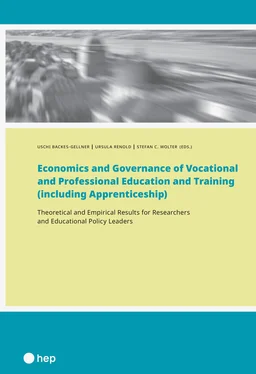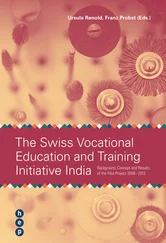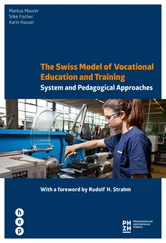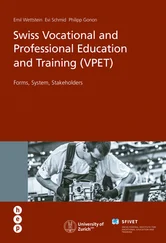OECD. (2010). Learning for jobs: Synthesis report of the OECD reviews of vocational education and training . Paris: OECD Publishing.
OECD. (2015). OECD reviews of vocational education and training: Key messages and country summaries. Paris: OECD Publishing.
OECD. (2017). OECD handbook for internationally comparative education statistics: Concepts, standards, definitions and classifications . Updated edition. Paris: OECD Publishing.
Parsons, T. (1940). The motivation of economic activities. The Canadian Journal of Economics and Political Science, 6 (2), 187–202. doi:10.2307/137203
Poole, M. (1986). Industrial relations: Origins and patterns of national diversity . London: Routledge & Kegan Paul.
Poole, M. (1993). Industrial relations: Theorising for a global perspective. In Adams, R., & Meltz, N. (eds.), Industrial relations theory . Metuchan, NJ: Institute of Management and Labor Relations Press.
Popper, K. R., & Hansen, T. E. (1979). Die beiden Grundprobleme der Erkenntnistheorie (Vol. 18). Tuebingen: Mohr.
Popper, K. R., & Hansen, T. E. (2012). The two fundamental problems of the theory of knowledge . New York: Routledge.
Pound, R. (1936). What may we expect from comparative law. American Bar Association Journal, 22 (1), 56–60.
Powell, A. (2019). Apprenticeships and skills policy in England. Briefing paper. Number CBP 03052. Retrieved 8.8.2019 from http://researchbriefings.files.parliament.uk/documents/SN03052/SN03052.pdf
Rageth, L. (2018). A configurational analysis of vocational education and training programmes: Types of education-employment linkage and their explanatory power. KOF Working Papers No. 442.
Rageth, L., & Renold, U. (2019). The linkage between the education and employment systems: ideal types of vocational education and training programs. Journal of Education Policy , 1–26. doi:10.1080/02680939.2019.1605541
Renold, U. (2015)Welche Akademikerquote brauchen wir? Ueber den Umgang mit Fuzzy Boundaries in internationalen Bildungssystemvergleichen. In: Amstutz, H., Dorn, A., Mueller, M., Ronsdorf, M., & Uljas, S. (eds.), Fuzzy Boundaries: Festschrift fuer Antonio Loprieno (pp. 941–963). Hamburg: Widmaier Verlag.
Renold, U., Bolli, T., Caves, K., Buergi, J., Rageth, L., Kemper J., & Pusterla, F. (2016). Feasibility Study for a Curriculum Comparison in Vocational Education and Training. The Education-Employment-Linkage-Index. KOF Studies, No. 80.
Renold, U., Bolli, T., Caves, K., Rageth, L., Agarwal, V., & Pusterla, F. (2015). Feasibility study for a curriculum comparison in vocational education and training. KOF Studies No. 70.
Renold, U., Bolli, T., Egg, M., & Pusterla, F. (2014). On the multiple dimensions of youth labor markets. KOF Studies No. 51.
Renold, U., Bolli, T., Gahr, K.M., Buergi, J., Oswald-Egg, M.E., Kemper, J.M., & Rageth, L. (2017). Comparing international vocational education and training programs: The KOF Education-Employment Linkage Index. KOF Studies No. 98.
Renold, U., Rageth, L., Caves, K., & J. Buergi (2019). Theoretical and methodological framework for measuring the robustness of social institutions in education and training. KOF Working Papers No. 461.
Rogers, P. (2017). Family is NOT an institution: distinguishing institutions from organisations in social science and social theory. International Review of Sociology, 27 (1), 126–41.
Rosa, H. (2003). Social acceleration: Ethical and political consequences of a desynchronized high-speed society. Constellations, 10 (1), 3–32.
Rosa, H. (2016). Beschleunigung: Die Veraenderung der Zeitstrukturen in der Moderne (Vol. 11). Frankfurt am Main: Suhrkamp.
Ryan, P. (2000), The institutional requirements of apprenticeship: Evidence from smaller EU countries. International Journal of Training and Development, 4 (1), 42–65. doi:10.1111/1468-2419.00095
Salvisberg, A. (2010). Soft Skills auf dem Arbeitsmarkt: Bedeutung und Wandel . Zuerich: Seismo.
Sartori, G. (1970). Concept misformation in comparative politics. American Political Science Review 64 (4), 1033–1053. doi:10.2307/1958356
Sartori, G. (1991). Comparing and miscomparing. Journal of Theoretical Politics 3 (3), 243–257. doi:10.1177/0951692891003003001
Schriewer, J. (2000). Internationaler Vergleich in der Erziehungswissenschaft. Zeitschrift fuer Erziehungswissenschaft 3 (4), (2000), 495–515.
Schweiwe, K. (2000). Was ist ein funktionales Aequivalent in der Rechtsvergleichung? Eine Diskussion an Hand von Beispielen aus dem Familien- und Sozialrecht. Kritische Vierteljahresschrift fuer Gesetzgebung und Rechtswissenschaft, 83 (1), 30–51.
Scott, W. R. (2008). Institutions and organizations: Ideas and interests (Vol. 3). Los Angeles: Sage.
Scott, W. R., & Meyer, J. W. (1994). Environmental linkages and organizational complexity: Public and private schools. In Scott, W. R., & Meyer, J. W. (eds.), Institutional environments and organizations: Structural complexity and individualism (pp. 137–159). Thousand Oaks, CA: Sage.
Swiss Development Cooperation (2016). Vocational skills development: key to employment and income. Insights into the SDC’s cooperation in vocational skills development. Bern. Retrieved 12.12.2019 from https://www.eda.admin.ch/dam/deza/en/documents/publikationen/Diverses/Broschuere_Berufsbildung_DEZA_160329_EN.pdf
Sharma, R. (2019). Adam Smith: The father of economics. In Investopedia. Retrieved 6.8.2019.
Sismondo, S. (1993). Some social constructions. Social Studies of Science 23 (3), 515–553.
Smith, A. (2012). The wealth of nations: An inquiry into the nature and causes of the wealth of nations . Ware, Hertfordshire: Wordsworth.
Social Constructs. (2019). In International Encyclopedia of the Social Sciences . Retrieved from https://www.encyclopedia.com/social-sciences/applied-and-social-sciences-magazines/social-constructs.
Steedman, H. (2001). Benchmarking apprenticeship: UK and continental Europe compared. Discussion Paper / Centre for Economic Performance 513. London: Centre for Economic Performance, London School of Economics and Political Science.
Stolz, M. (2005, March 31). Generation Praktikum, Die Zeit .
Teuber, S., Backes-Gellner, U., & Ryan, P. (2016). How companies adjust their span of control to national institutions. Evidence from matched-pair engineering companies. Die Betriebswirtschaft (DBW),76 (4), 255–273.
Trilling, B., & Fadel, Ch. (2009). 21st century skills. Learning for life in our times (Vol. 1). San Francisco: Jossey-Bass.
Turner, J.H. (1997). The institutional order: Economy, kinship, religion, polity, law, and education in evolutionary and comparative perspective . New York: Longman.
UNESCO. (2011). International Standard Classification of Education: ISCED 2011 . Montreal, Quebec: UNESCO Institute for Statistics.
UNESCO. (2015). Recommendation concerning technical and vocational education and training (TVET). Paris: UNESCO.
UNEVOC. (2019). What is TVET? In TVETipedia Glossary . Retrieved from https://unevoc.unesco.org/go.php?q=TVETipedia+Glossary+A-Z&article=What%2Bis%2BTVET
Van de Vijver, F. J. R. (2003). Bias and equivalence: Cross-cultural perspectives. In Harkness, J., van de Vijver, F. J. R., & Mohler, P.P. (eds.), Cross-cultural survey methods . Hoboken NJ: Wiley.
Van Fraassen, B. C. (1980). The scientific image . Oxford: Clarendon Press.
Winch, C. (1998). Two rival conceptions of vocational education: Adam Smith and Friedrich List. Oxford Review of Education, 24 (3), 365–78.
Читать дальше












